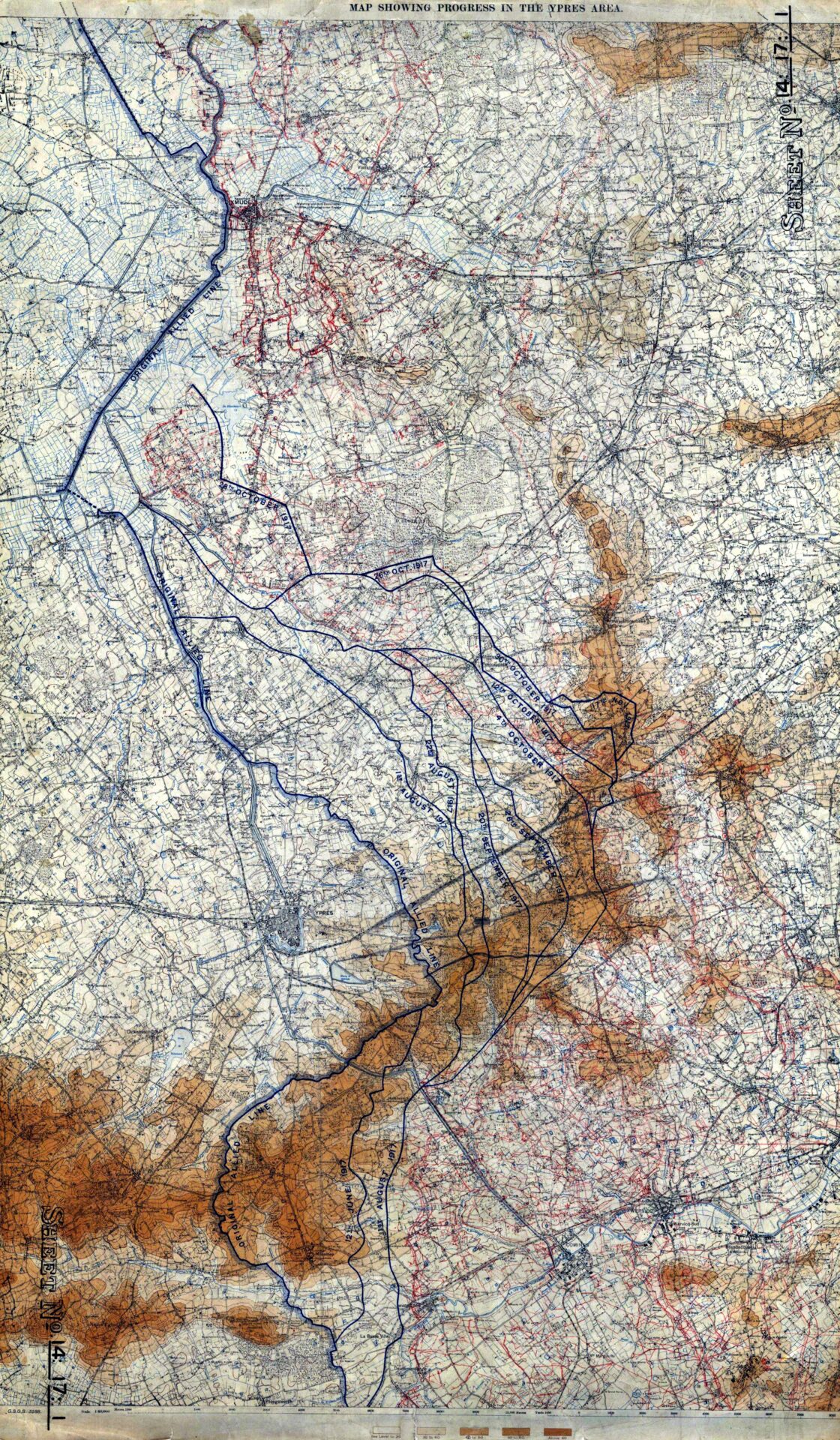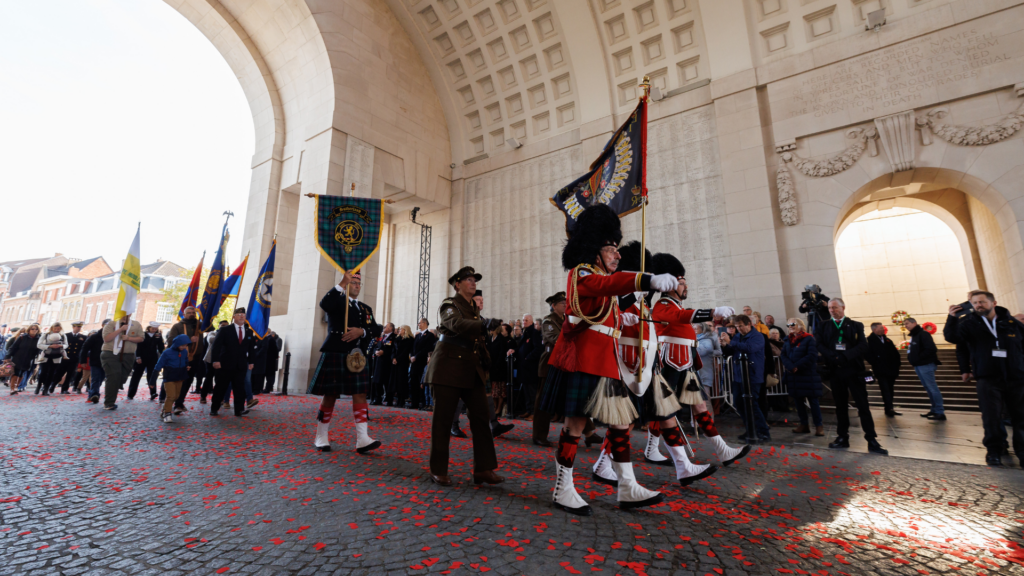As the crucible of the Great War, Belgium becomes the international focus of commemorative events every 11 November Armistice Day, with arguably the most significant of these taking place in Ypres, the Flemish town that was destroyed in the conflict and witnessed some of the bloodiest battles of the war.
Soon after the outbreak of the First World War, Germany demanded free passage through Belgium to attack France from the rear. King Albert's refusal to stand aside resulted in Germany invading on 4 August 1914.
The Allied victory at the Battle of the Marne in September 1914 stalled the German invasion and triggered what is now known as the “Race to the Sea,” in which Allied and German troops raced northwards while trying to outflank each other in a series of battles and digging trenches along the Western Front.
The First Battle of Ypres saw Germany attempt to capture Ypres to control the outlets to the North Sea. They were repelled by the French and the British but the battle lingered until the arrival of winter ended the fighting. By then, the Allies held control of the Ypres Salient – a narrow area of land that bulged almost six kilometres into German lines and included the city of Ypres.

Map showing British-French advances in the Ypres area in 1917. Credit: UK National Archives, Public domain, via Wikimedia Commons
The Second Battle of Ypres began with a surprise German attack on 22 April 1915. This also marked the first use of chemical warfare – chlorine gas – by the Germans. The poisonous gas killed thousands of Allied soldiers, whose troops had to retreat several kilometres.
However, the German forces failed to take full advantage of this retreat and so did not break Allied lines. Instead, they bombarded the city of Ypres and reduced it to a pile of rubble, including its 13th-century Cloth Hall and Cathedral of St. Martin.
The Third Battle of Ypres began with a British Offensive in July 1917. Also known as the “Battle of Passchendaele” because the British captured a town with that very name, the Ypres Salient was only widened by 8 kilometres. Spring 1918 saw the German forces mount a powerful push, with the noteworthy change from chlorine gas to mustard gas. 400,000 Allied troops were killed as their opponents regained land and almost captured Ypres.
But by September 1918, the German army was exhausted and the arrival of Americans helped the Allies make gains, including in the Battle of the Houthulst Forest, which involved almost the entire Belgian Army.
World War I finally ended when the armistice was signed at 11:00 on 11 November 1918.
The Legacy of Ypres in World War I
The Three Battles of Ypres cost the lives of over 850,000 Allied and German soldiers, making the Ypres Salient the site of some of the bloodiest conflicts of the entire war. Along with the Somme (in northern France), the Ypres Salient has come to be seen as a symbol of the colossal and meaningless loss of human life during wartime.

Ypres destroyed during World War I. Credit: Public domain, via Wikimedia Commons
It was also in Ypres that on 3 May 1915, Canadian soldier John McCrae wrote the famous poem "In Flanders Fields" in honour of his fallen comrade. Poppies grow best in disturbed soil and thrived in the battlefields around Ypres. Little did McCrae know that his poem would immortalize the flower as an enduring symbol of the lives lost in World War I.
The Ypres Salient also produced a curious project: a trench publication for soldiers called The Wipers Times (Ypres nicknamed “Wipers” as the English speakers had trouble pronouncing the French name). Produced by Captain Fred Roberts and Lieutenant Jack Pearson of British Army 12th Battalion Sherwood Foresters, The Wipers Times was printed for the first time in February 1916 after they found a printer among the Ypres rubble and one of their sergeants was able to fix it.
Related News
- Nearly 250 WW1 letters donated to In Flanders Fields Museum in Ypres
- Today in History: Belgian spy and First World War hero is executed
- Brussels in 1918: Occupation, revolution and the Armistice
According to the National Army Museum in the UK, The Wipers Times was a “witty and sophisticated newspaper – a cross between a parish magazine, a school magazine and the illustrated magazines of the day.” The limited copies were consumed voraciously by the soldiers in the trenches, and after various name changes throughout the war, it was ultimately called “The Better Times.” A collected edition was published in London in 1918 and then in 1930.
Commemorating Ypres on Armistice Day
Whilst many sites commemorate World War I once a year, Ypres has remembered it every day since 1928 with “The Last Post” – a salute to those who died in the Ypres Salient, played by the buglers of the Last Post Association. The commemoration is held at 20:00 beneath the Menin Gate Memorial to the Missing.
For Armistice Day the city organises various events, including a poppy parade, a special Last Post at 11:00 and a concert. On average, 5,000 people gather in the Ypres city centre, most of them tourists, and watch the ceremony on a large screen on the Market Square.
You can find the full programme and information for reservations and parking on Ypres tourism’s website.

